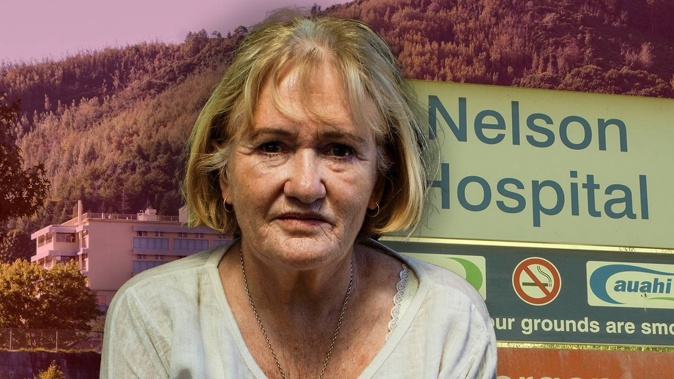

Are you unhappy at work and thinking of taking on your boss this year? Not sure about the small print in your employment contract? There’s a right and wrong way to tackle these sometimes thorny topics, but any which way, join the queue of thousands each year striving to settle a score at work. Open Justice reporter Tracy Neal investigates.
Midwife Jackie Harte says being called in by management and told a bullying complaint had been lodged against her felt the same as being told someone had died.
And she’s been through some of the toughest traumas imaginable, including the loss of a son, and a sister.
“My sense of reality, of trust and my sense of self went down the tubes in minutes,” says the former midwife and co-ordinator at Te Whatu Ora, Te Tau Ihu, Health New Zealand, Nelson-Marlborough.
The meeting with management and what happened afterwards was ultimately the reason she quit in January 2023, in what she argues was a forced resignation, after nine years in the role.
/cloudfront-ap-southeast-2.images.arcpublishing.com/nzme/V26STZDYPBDZZFT4HJDYSTHS4I.jpg) Nelson midwife Jackie Harte quit over a bullying allegation against her, which ended up being unfounded. She then took her former employer to the ERA over the manner in which the accusation was handled. Photo / Tracy Neal
Nelson midwife Jackie Harte quit over a bullying allegation against her, which ended up being unfounded. She then took her former employer to the ERA over the manner in which the accusation was handled. Photo / Tracy Neal
Meanwhile, hairdressing apprentice *Mai is part-way through resolving a dispute with her employer, wondering if it’s all been worth it.
The 23-year-old was four years into her apprenticeship and “pretty close to finishing” when things blew up.
She says it kicked off after Covid when work “became a nightmare,” as the business faced financial pressure in its recovery from lockdown, when it was closed for months.
“I was expected to do far more but not get paid more. I felt like when we came back, there was so much pressure.”
Mai quit, ending her dreams of becoming a hairdresser, and started down the legal route.
She and Harte are just two of the thousands who have lodged a claim with the Employment Relations Authority in the past five years.
More than getting the sack
The authority, known as the ERA, is not a court but a tribunal that hears disputes that arise in the workplace, from resolving clauses in employment contracts to settling matters over a sacking.
One of the country’s most senior employment law experts, Peter Kiely, ONZM, who has practised employment law for more than 30 years, says there’s a view that employment law is all about dismissal and firings.
“It’s not. There are associated issues relating to sales and purchases of companies, restraints of trade, protection of intellectual property that the employment institutions also have to deal with.”
He cites a recent, higher-profile case than most as an example.
Kiely succeeded in the case where the ERA ordered broadcaster Tova O’Brien to comply with modified terms of restraint of trade and pay $2000 for “breaches of her employment agreement” during her transition to a new role.
“There’s a perception [injunctions] aren’t enforceable but there are commercial rights where people have established a business, big or small,” Kiely says.
Workers have, in recent times, become increasingly comfortable going to the ERA, not only for disputes in the conventional sense but simply for help, says New Zealand Council of Trade Unions legal officer, Gayaal Iddamalgoda.
He says the ERA plays an increasingly important role in resolving genuine questions about rights and obligations in the workplace, such as how a particular provision in an employment agreement is to be interpreted.
Iddamalgoda says it helps to promote harmonious industrial relations and prevents bigger problems down the track.
Kiely says, in essence, the Employment Relations Act is designed to protect employees from employers who have done the wrong thing.
He says a commonly held view that the ERA “sides with the worker” is unfounded, but most likely tied in with the fact that significantly greater numbers of employees than employers lodge claims.
In 2019, the ERA decided on 731 cases, involving 2165 employees and 164 employers. In 2023, up until October 27, it had heard 632 cases involving 1761 applicants of which 1642 were employees.
A single case often involves more than one applicant, which means the number of people to lodge claims is higher than the number of cases heard, according to the Ministry of Business Innovation and Employment (MBIE), which has oversight of the ERA.
The trend has been consistent over five years with the drop in 2020 and 2021 likely due to the impact of Covid-19.
Dispute “types” are broad and there are 49 dispute codes at the same level as unjustified dismissal, which is the most common reason for lodging a claim, MBIE says.
Since 2019, there have been 5213 such claims lodged. All other dispute codes combined total 22,736 over the same timeframe.
Coming to a head
Among them were those lodged by Harte and Mai.
Harte spent her career in the medical field, first as a registered nurse who specialised in psychiatric care, before moving into midwifery 25 years ago.
It was terrifying, she says of the decision to not only quit and set up as a community midwife but to take a stand over what happened.
The flashpoint occurred in July 2022, around the time her role was transferred from its predecessor Nelson Marlborough District Health Board.
Harte had completed a night shift due to staffing shortages and planned to stay on to chair a scheduled services review meeting.
/cloudfront-ap-southeast-2.images.arcpublishing.com/nzme/NYYTINR6INCHNAJCQ25HRAX42A.jpg) Nelson midwife Jackie Harte says being at the centre of an employment dispute is among the most traumatic experiences in life. Photo / NZ Herald
Nelson midwife Jackie Harte says being at the centre of an employment dispute is among the most traumatic experiences in life. Photo / NZ Herald
Her manager asked her to stay behind afterwards, saying the HR business partner was coming to see her with a complaint.
Harte was handed a letter that included copies of complaints about her, information about an investigator who had been appointed, advice about who was to be on the investigation panel, a copy of the bullying and harassment prevention policy and an employee assistance programme brochure.
Harte was thunderstruck. She says her initial reaction was shock and embarrassment.
“It was just horrifying because I had no idea that anything was happening.
“There was no warning and I had so many other things happening in my life at the time. I’d stand in the doorway and wonder where to begin.”
She had just lost her terminally ill sister who died only months after diagnosis. Then her mother collapsed and had to have heart surgery, and then had a stroke.
She was left managing the affairs of her sister’s estate, as well as care for her niece.
“I managed to sell three houses, bury my sister, set up a trust fund and go to the ERA and I don’t know how I managed.”
She credits getting through it all to the “incredible support” from colleagues.
“It horrified me to think someone thought I was a bully, let alone be accused of it on such an official level.”
Harte says her trust in the workplace was destroyed in minutes.
“All I was thinking was that I have to walk out of this building with people thinking I’m a bully, and I didn’t know.”
Natural justice
It’s an example of a process that can get an employer into trouble, says Iddamalgoda.
A large part of his work over the past decade has been representing unions and their members in the ERA.
He says the ERA is particularly interested in the principles of natural justice.
/cloudfront-ap-southeast-2.images.arcpublishing.com/nzme/IYDUTOUHQNFCHD27UGG7JSEQZE.jpg) Legal officer for the New Zealand Council of Trade Unions, Gayaal Iddamalgoda. Photo / NZCTU
Legal officer for the New Zealand Council of Trade Unions, Gayaal Iddamalgoda. Photo / NZCTU
“When you’re exposed to a process that might mean you are being disciplined or you might lose your job, you shouldn’t expect to be surprised.
“There should be a reasonable opportunity to look at the information that the employer might be relying on to form a view about you.”
The health board later conceded its procedural failings, after it ended its investigation and found no bullying had occurred. Harte was offered $15,000 to resolve the matter.
But the damage was done. Harte quit, not knowing who had made the complaints, and raised a grievance for unjustified constructive dismissal, seeking compensation of at least $30,000 and penalties for breaches of good faith.
Te Whatu Ora argued the failings were neither “deliberate, serious, and sustained, nor intended to undermine the employment relationship”.
The ERA ultimately found Harte was unjustifiably disadvantaged in her employment, but not constructively dismissed – where an employee feels they have no option but to resign – and ordered Te Whatu Ora to pay $15,000 to settle the grievance.
The ERA also slapped a $4000 penalty on the employer over the way in which HR had bungled advice to Harte’s lawyer.
Authority member Helen Doyle said in her decision that “incorrect and misleading advice” was likely not a mistake but deliberate, and probably done to cover an error.
She called it a “serious matter” because the incorrect advice was not corrected before the HR business partner swore an affidavit for the ERA around early October and likely relied on the information provided by the senior HR adviser.
Harte continues to push for the answers she wants. The health board told NZME it couldn’t comment on an individual employment matter.
Weighing the costs
Meanwhile, Mai is wavering about whether to continue her fight.
The friction at work that led to her decision to resign, followed by a demand from her former employer that she was liable to pay back $16,000 in training fees (provided through the salon by an external provider), has taken a big toll on her personally.
Despite having legal aid to help her through the early stages of the process, she shudders at what is at stake should she lose, including the possibility she’d have to pay her former employer’s legal costs.
“I did my research before thinking about doing this, so I had an idea of what was ahead.”
However, Mai says a part of her will always feel like she has lost.
“I never got my qualification and that was the main thing I wanted; that piece of paper saying I was a qualified hairdresser, but it’s not worth feeling like you’re terrible at your job.”
Iddamalgoda says the “fight or walk” decision is deeply personal and unique for each worker.
“Everyone I’ve ever had the conversation with has really wrestled with it. They’ve weighed up their mental health, and weighed up their relationship with their family. It’s never taken lightly when workers decide to stand up for their rights. It’s a huge deal to them.”
Mai is also put off by the prospect of a court setting after going through mediation, which she found “incredibly intimidating”.
Kiely, who is a partner in Auckland firm Kiely Thompson Caisley, which largelyrepresents business and employers, is a believer in mediation.
/cloudfront-ap-southeast-2.images.arcpublishing.com/nzme/EBS2BHDBRJDYRIBAHOWGH4TS7I.jpg) Employment law expert Peter Kiely ONZM. Photo / Kiely Thompson Caisley
Employment law expert Peter Kiely ONZM. Photo / Kiely Thompson Caisley
He says it’s an “excellent avenue” for settling disputes, the majority of which end there.
“Australian clients look at our mediation system and wish they had it. They don’t have it – it’s free here, the government pays for mediation.”
To court – the next level
Iddamalgoda says the ERA is less formal than a court, yet has a far more inquisitorial mandate and a great deal of flexibility.
Kiely says the fact there are so few appeals to the Employment Court suggests people generally feel they’ve had a fair hearing in the ERA.
The inaugural annual report of the Employment Relations Authority, Te Ratonga Ahumana Taimahi, released in May 2023, shows 18 per cent of decisions were challenged in the Employment Court in 2020, and 17 per cent in the following two years.
Authority chief Andrew Dallas says in the report’s introduction that the Court of Appeal has, in the last five years, agreed with the ERA in 75 per cent of cases that began in the Authority and ended up before the Court.
Kiely says anyone thinking they might get an easier ride by heading straight to the Employment Court instead of the ERA might well be mistaken.
“That’s not my experience at all.”
He says removing a case to the Employment Court requires a more law-informed approach and pushes costs higher.
“I find the ERA is far more flexible and investigative, whereas, in the Employment Court, where the parties have to drive the litigation, the importance of your quality of representation really affects the result.
“In the Authority, anyone can take a case and you don’t even have to be represented.”
Iddamalgoda says a trend he’s noticed in the last decade is the growing number of workers comfortable representing themselves.
The ERA’s annual report shows 39-40 per cent of employee cases from 2020 to 2022 had a lawyer representing them. However, the number representing themselves dropped from 20 per cent to 13 per cent in 2022.
Employers are much more likely to lawyer-up with 63 per cent seeking legal representation in 2020, and 59 per cent in 2022.
The rise in employees using advocates, from 34 per cent in 2020 to 41 per cent in 2022, has caused the biggest shift in how the ERA functions, and not always for the better, Kiely believes.
An advocate might be well-versed in employment law and a good representative but doesn’t always have the same level of qualification as a specialist lawyer.
Speaking up
As Harte takes a break ahead of another tough week on-call, she reflects on what might have happened. She believes it’s people like her, who speak up, who are more likely to be targeted.
“You become comfortable, with maturity, in speaking out and I’ll tell someone if something doesn’t look right. But I’ve done a lot of self-reflection and think about how I do come across to some.”
She believes the difficulty of speaking up may be a bigger problem in the medical sector, due in part to the enormous pressure on staff where a moment can be the difference between life and death.
But the behaviour among those in senior ranks has vastly improved on what it used to be, Harte says.
“We grew up in an environment where we never saw it as okay, but accepted it and got on with the job.
“We don’t accept that now, and that’s not a bad thing.”
She has no regrets about what she’s done, but if anyone thinks she did it for the money, they’re wrong.
“You don’t walk away with money, you’ll mostly walk away out of pocket.
“I just wish more people would stand up and fight the bloody bureaucracy that goes on in the workplace, which is rather ironic given it was me who was accused of being the bully.”
*Mai is not her real name. Her matter is not yet resolved.
Tracy Neal is a Nelson-based Open Justice reporter at NZME. She was previously RNZ’s regional reporter in Nelson-Marlborough and has covered general news, including court and local government for the Nelson Mail.

Take your Radio, Podcasts and Music with you









